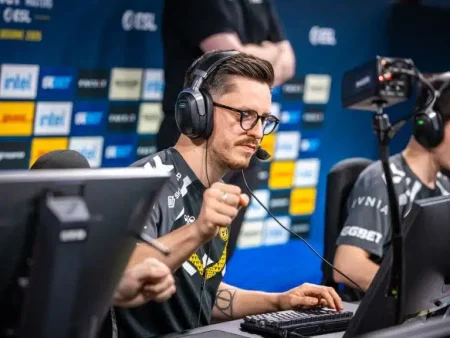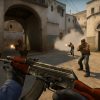Discover how spawn priority in CS2 impacts map control, timing, and strategy. Learn pro-level insights, spawn-based tactics, and how to gain early-round advantages on every map.
In Counter-Strike 2 (CS2), a “spawn” refers to the location where a player begins a round. Each side—Terrorists and Counter-Terrorists—has a specific set of spawn points on every map. These are strategically placed by Valve and play a crucial role in how teams approach each round. The sequence in which players spawn, often referred to as “spawn priority,” can offer significant tactical advantages, especially in the first 5–10 seconds of a round.
Spawns aren’t just about where you appear—they’re about how quickly you can reach critical areas of the map. In a game where milliseconds can decide a duel, a favorable spawn can be the difference between winning and losing control of vital map zones. For example, the player who spawns closest to Mid on Mirage can often be the first to peek and take control of that crucial position.
Understanding spawn mechanics goes beyond basic positioning. It directly impacts team movement, utility deployment, and even psychological plays. While casual players might overlook spawn significance, seasoned players and professionals build entire strategies around spawn order and positioning.
The Role of Spawn Priority in Competitive Play
In pro-level CS2, spawn priority isn’t just noticed—it’s exploited. Teams use it to rush certain areas, get aggressive control, or even call last-second audibles based on who spawned where. It’s common for in-game leaders (IGLs) to base their round calls entirely on spawn positions, especially for tactics that require precision timing.
For instance, if the best AWPer on the team gets a front spawn on the CT side of Overpass, the team might instantly call for an aggressive long push. On the flip side, if a rifler spawns close to Banana on Inferno, the team might execute a fast control play there.
In CS2, spawn order isn’t just a background mechanic—it’s an active strategic tool. The more aware your team is of it, the more you can squeeze out of every round.
Understanding the Spawn System
Random vs. Predetermined Spawns
In casual matches, spawns can often feel random—but in reality, there’s a semi-predictable structure behind them. Each map has a defined number of spawn points for each side, usually ranging from 5 to 10, depending on the map’s layout. The game randomly assigns players to these spots at the start of each round.
But here’s the twist: this randomness is within a controlled pool. For example, on Mirage, the Terrorist side has spawns ranging from near T-Ramp (for A executes) to closer to T-Spawn back for mid or B. If you’re playing matchmaking or FACEIT, you’ll notice that some players always seem to get the best spawn for A-Ramp rushes or Mid peeks—that’s spawn priority in action.
In pro play or scrims, spawn assignment is noted immediately by the IGL, and sometimes they even pre-plan their rushes depending on spawn clusters. It’s not just about who gets what—it’s about how fast you can react and adapt.
How Valve Has Tweaked Spawns in CS2 Compared to CS:GO
One of the subtle but important updates in CS2 is how Valve has slightly adjusted spawn timings and locations to improve balance and reduce repetitive rush dominance. In CS:GO, some maps favored specific spawns heavily, allowing certain rush tactics to become too strong or predictable. With CS2, spawns have been redistributed to create more dynamic early-game scenarios.
For example, on Overpass, Valve has tweaked the CT spawns to slightly delay the time to Fountain, balancing the aggression potential. Similarly, on maps like Inferno and Anubis, spawn spacing has been adjusted to reduce overwhelming early Banana or Mid control without contest.
Additionally, thanks to the Source 2 engine, spawns feel smoother in CS2. There’s less spawn “jitter,” making player movements from spawn to control points more reliable and consistent—another small edge that skilled players can take advantage of.
Why Spawn Priority Matters in CS2
The First Few Seconds: A Race for Map Control
In CS2, the first 10 seconds can dictate the rhythm of an entire round. Whether it’s pushing Banana on Inferno, peeking Mid on Mirage, or rushing Connector on Anubis, those early seconds are a race—and spawn priority is your head start.
Let’s break it down: imagine you’re playing Mirage, and you spawn right next to T-Ramp. This gives you a 2–3 second head start on players spawning at the back of T-Spawn. That may not sound like much, but it’s enough to:
- Get to Ramp before the CTs can peek.
- Drop a smoke before they set up their AWP angle.
- Catch an early pick or bait utility.
Now multiply that advantage across five players and an entire strategy. You can quickly see how a well-timed rush or map control play, built around spawn priority, can tilt the odds in your favor.
CTs also benefit massively. On Inferno, if a CT spawns closest to B, they can toss a deep Molotov and deny a T-side rush before it begins. Similarly, an AWPer with a front spawn on Overpass can dominate Long before Ts can even peek.
How Spawn Positions Influence Tactical Decisions
Tactics don’t live in a vacuum—they’re alive, adaptable, and reactive. And spawn positions often trigger the first decision-making step in a round. It’s not uncommon to hear an IGL shout, “You’ve got the best Banana spawn—go for the pick!” Or “We have 3 good A spawns, let’s rush palace.”
Spawn-based tactics usually fall into three categories:
- Aggressive control plays: Like rushing A Ramp or Banana when you have favorable spawns.
- AWP setups: Giving the best spawn to your sniper to hit early angles.
- Defensive utility plays: Reaching choke points quickly to throw smokes/molotovs to delay rushes.
It’s all about exploiting your head start. Teams that recognize this and shift plans accordingly—especially on the fly—tend to have better map control and round conversion rates.
Spawn Priority on Popular Maps
Mirage – Fighting for Mid Control
Mirage is perhaps the best example of spawn-based tactics in action. Mid control is everything on this map—once secured, your team can split A, fake B, or lurk in Connector with impunity. And spawn priority is the first domino to fall.
As a Terrorist, the closer you spawn to Mid, the faster you can:
- Get to Top Mid and challenge Window.
- Smoke Catwalk before CTs can rotate.
- Drop a flash peek for your AWPer.
Meanwhile, CTs with front spawns can:
- Jump into Window with an AWP instantly.
- Cross into Connector with early control.
- Push underpass aggressively if they spot no Ts early.
Spawns even influence eco rounds. A T-side player with a great spawn might be given the MAC-10 or Tec-9 and told to “go full send” A-Ramp or Mid. It’s all about pace and timing—and your spawn dictates both.
Inferno – Banana and Second Mid Races
Inferno is infamous for its intense early-round duels at Banana, and this makes spawn priority even more crucial. Banana is the main battleground for map control, especially in the first 10 seconds of every round. Whoever takes Banana often dictates the pace for the rest of the round—and a good spawn can be the deciding factor in who gets there first.
On the CT side, the front two spawns are almost always designated to the B players. These players can reach Banana faster, allowing for:
- A deep Molotov to stop a rush.
- Aggressive peeks down Banana for early intel or frags.
- Boost setups before the Ts arrive.
A strong spawn can mean the difference between safely setting up utility or getting caught mid-animation while throwing it.
On the T side, a player with the best spawn might be given an SMG or AK and told to full-send Banana. It’s common to flash for the entry fragger with a good spawn and try to overwhelm CT utility before they can set up crossfires or mollies.
The same logic applies to Second Mid. If Ts spawn close to it, they can beat the CTs to Apartments and set up quick A-site hits. Conversely, a CT with a forward spawn might peek boiler early or even jump into Alt-Mid for aggressive info plays.
Spawn priority on Inferno isn’t just about rushing—it’s about being first to use or deny information. And in a map where info is often scarce, that can mean everything.
Overpass – The A Long and Fountain Rush
Overpass has always been a map defined by control of the map’s vast and complex early territories—most notably Fountain, Playground, and A Long. Because the map is so wide, spawn priority plays an enormous role in early engagements and utility usage.
For Terrorists, a front spawn gives access to Fountain or Playground within seconds. This enables:
- Fast pressure toward A site to deny aggressive CT setups.
- Quick control of the Toilet area.
- Early flashes or smokes to push off CT AWPers.
When executed well, a T-side push with favorable spawns can completely take over A Long and Toilets before CTs even get there, especially if the defending side lacks fast spawns.
On the CT side, spawn priority is equally critical. The fastest spawns allow:
- A fast peek into Playground or Fountains with an AWP or rifle.
- Early presence in Connector to cut off T rotations.
- Smokes and molotovs to slow down any fast A takes.
The AWP especially thrives here. If a CT AWPer gets the best spawn, teams will often coordinate utility to get them into Long or Fountains safely. Conversely, if the spawns are bad, many teams opt for a default or B-heavy setup.
Overpass rewards players who understand spawn-based timings down to the second. Knowing who gets there first can save your life—or win your team the round.
Anubis – Contesting Mid and Canal
Anubis is one of the newer maps in the Active Duty pool, but it’s quickly becoming a tactical favorite due to its layered mid-area, tight chokepoints, and sharp angles. Here too, spawn priority is a game-changer.
Mid control is vital on Anubis. Teams that secure Mid gain rotational options, lurk paths, and more control over the pace of the game. Getting to Mid before your opponent often results in early picks or map pressure that forces rotations.
On T side, a good Mid spawn allows:
- A fast peek into Mid to catch rotating CTs.
- Utility setup for Canal control.
- Lurking into Water or sneaking up on A defenders.
On CT side, strong spawns give you:
- Fast cross into Mid to contest or molly the area.
- Early utility to block T approaches.
- Control of aggressive angles at Canal or Connector.
Timing matters here more than in many other maps. The mid-section of Anubis is a constant fight for information. The better your spawn, the more proactive your team can be in shaping the round’s early dynamics.
Nuke – Outside Control and Ramp Pushes
Nuke, with its unique verticality and multi-layered map structure, also benefits massively from spawn priority. While it might not seem as timing-dependent as Mirage or Inferno at first glance, the reality is that early positioning determines control of Outside, Ramp, and even Squeaky pushes.
CTs with good Outside spawns can:
- Reach Garage or Secret faster to shut down T-side control.
- Post AWPers on T Red Box or Silo quickly.
- Throw smokes to obscure vision and delay Ts.
On T side, strong spawns allow:
- Fast Silo climbs to peek Garage or Heaven.
- Quick smokes for a Secret push.
- Timely flashes for Ramp or Hut executes.
Nuke is also one of the most heavily strat-dependent maps, which means spawn-based timing is critical to coordinated execution. A second’s delay can mean your AWPer misses the Silo peek, or your B lurker arrives too late.
Spawns also affect aggression. If your CT player spawns closest to Hut or Squeaky, you might call for a Hut push with a pop flash. On the T side, good spawns can lead to an early Squeaky or Mini burst—especially useful in pistol rounds.
Strategic Implications of Spawn Positions
Executing Early Rushes Based on Spawns
One of the most practical uses of spawn priority is in executing early rushes. When a team recognizes that two or three players have ideal spawns for a particular choke point, they may immediately call a rush. This is especially effective on maps like Mirage (A-Ramp rush), Inferno (Banana rush), or Overpass (A Long rush).
These rushes often aim to:
- Beat utility usage from the opposing team.
- Exploit a weak defense or mispositioned enemy.
- Create chaos and catch opponents off guard.
For example, a triple-A Ramp rush on Mirage may be decided solely by spawn order. If three players have front spawns, the IGL can call a flash-and-go tactic, trusting their team’s ability to beat the CT’s AWP to the angle.
Spawn-based rushes rely heavily on muscle memory and utility coordination. Teams will often pre-plan these rounds, labeling them by spawn clusters like “Rush B3” or “Ramp 1-2-3.” Everyone knows their role and utility placement, and it all hinges on spawn priority.
Rushes aren’t random—they’re rehearsed and often practiced on custom servers where players memorize timings down to fractions of a second.
Adapting Team Strategy to Spawn Layout
Spawn layout can shift a round’s entire strategy. Great teams don’t just recognize spawn potential—they adapt to it on the fly.
Let’s say your AWPer gets the third-best spawn on Overpass. Instead of forcing a risky peek into Playground, the IGL might reassign him to B or Connector. Similarly, if your riflers spawn deep at T-Spawn on Inferno, the team might abandon an early Banana fight and play for mid control instead.
IGLs and experienced players often look at spawn layout at the start of each round and make a quick call:
- “You have the best spawn—take Banana solo.”
- “AWPer has back spawn—play passive mid.”
- “Three good spawns A—go for an A fast hit.”
Spawn awareness allows teams to play smart rather than brute force. It’s like poker—you play the hand you’re dealt, but how you play it determines the outcome.
Spawn Influence on Utility Usage
Timing Smokes, Molotovs, and Flashes Based on Spawns
In CS2, timing is everything, especially when it comes to utility usage. Knowing when and where to throw your grenades isn’t just about strategy—it’s about positioning. And what affects your position most at the start of the round? Spawn priority.
A player with a front spawn can:
- Throw deep smokes before the enemy arrives.
- Land Molotovs at chokepoints before rushes start.
- Set up flashbangs to support early aggression or counter pushes.
Take Inferno as an example. If your B site anchor spawns closest to Banana, they can instantly toss a Molotov into the logs position to prevent a fast T-side rush. Alternatively, a front-spawned T with a smoke can beat the CT to the corner and block vision, allowing a clean entry.
Timing utility is directly impacted by spawns. A player who spawns too far back might be late to throw a crucial smoke, leaving their team vulnerable for a few extra seconds—enough time for the enemy to take space or land a pick.
Even small things like the angle you throw a flashbang can change depending on your spawn. The sooner you reach the throw spot, the more time your teammates have to act on it. That’s why spawn-prioritized utility is often coordinated before the round even starts, with set lineups and calls.
Denying Early Control with Better Spawn Awareness
Understanding your spawn is only half the battle. The real edge comes from knowing your opponents’ spawns too. Skilled players and IGLs often read the round based on enemy timing and predict whether the opponent is pushing aggressively or playing back.
On maps like Mirage or Overpass, if CTs reach Mid or Long faster than usual, it’s likely they had favorable spawns—and you need to respond accordingly. This could mean holding back for a delayed peek, using a HE grenade to punish early presence, or setting up for a double peek instead of taking a dry duel.
Teams use this spawn-awareness defensively to deny map control without fighting:
- Well-timed smokes to cut off fast Ts.
- Anti-flash positions that assume early aggression.
- Rotations based on where the “fast spawn” player might go.
If you can deny early map control just by understanding spawn timings, you force your opponent into defaults or delay their executes—giving your team the advantage before a shot is fired.
Pro Players’ Take on Spawn Priority
How Top Teams Use Spawns to Their Advantage
Pro teams don’t just react to spawns—they plan entire rounds around them. Spawn priority is part of the pre-round checklist for IGLs at the highest level of play. You’ll often hear pro players like gla1ve, karrigan, or Jame calling audibles based on who got which spawn.
Let’s break down how spawn awareness manifests in pro games:
- Assigning the best spawn to the AWPer: This happens often. If the AWPer has a good spawn for Mid, they take it, and the round might be built around that early control.
- Changing default positions: Teams will sometimes shift who plays which role in a round. For instance, if the best Banana spawn is on a player who doesn’t usually play there, the IGL might still send them for an early contest.
- Accelerated strategies: A team may call a “fast exec” if they have two or more players with good spawns toward a specific site. On Overpass, three good T spawns might lead to an instant A Long rush.
Pro teams also scrim specific spawn-based strategies, practicing timings over and over to maximize that 2–3 second edge. They’ll run the same rush or boost 20 times in a row, tweaking it for spawn-specific variations. It’s a level of detail that separates Tier 1 teams from the rest.
In-Game Leaders (IGLs) and Spawn-Based Calls
The IGL is the brain behind every move, and when it comes to spawn priority, they are the first to spot an opportunity. In fact, spawn layouts can be the deciding factor between three or four prepared calls.
Here’s how top IGLs use spawns:
- Quick Call Outs: As soon as the round starts, the IGL checks spawns and announces, “You have the best Ramp spawn—go peek fast,” or “We’re set up for B rush.”
- Adapting on the Fly: If a player is out of position based on spawn, the IGL might reroute them for a late lurk or supportive role.
- Utility Planning: The IGL might designate who throws which grenade based on how fast they can reach a specific position.
Some teams even have spawn naming conventions, where players identify their spawn number—“I’m 1 spawn” or “I’m 3 toward Mid.” This helps the IGL make faster, more precise decisions.
Spawn-aware IGLs build reactive strategies that feel like clockwork, capitalizing on small timing windows that the enemy may never notice—but always feel.
How to Practice Spawn Awareness
Custom Maps and Spawn Training Tools
If you want to improve your timing and use spawns effectively, practice is essential. Luckily, there are a number of tools and custom maps that help players refine their awareness of spawns and timings.
Workshop maps like “Refrag,” “Yprac,” and “Training_aim_csgo2” (now CS2 versions exist) allow you to:
- Run from each spawn point and time how fast you can reach key positions.
- Rehearse utility throws from various spawn locations.
- Train early duels based on spawn timing (especially useful for AWPers).
Another effective method is to record demo replays and analyze your own pathing based on spawn. Where did you go? Could you have reached a position faster? Were you late with your utility?
Many pro teams even practice dry-run tactics in private servers, having players execute full strategies based solely on spawn layouts.
By understanding the strengths and weaknesses of each spawn, you gain an edge that average players overlook. This practice gives you the muscle memory to perform under pressure and the game sense to adapt in real-time.
Developing Reflexes and Map Timings
Even with the best spawn, you can still lose the advantage if your movement isn’t clean. That’s why spawn-based training should include pathing drills and timing awareness.
Try this:
- Pick a map and load a private server.
- Practice your route from each spawn point to the most contested area (e.g., Top Mid on Mirage, Banana on Inferno).
- Focus on clean movement—no overstepping, no bunny-hop failures.
- Time each run with a stopwatch or HUD tool.
By repeating this, you build an instinct for how long it takes to reach each spot, so you can plan your utility, peeks, or holds accordingly. You’ll also start to “feel” when an enemy has a good spawn—because you know the timing like second nature.
High-level spawn usage is about precision. And like anything in CS2, that comes from hours of focused, smart practice.
Spawn Priority in Pistol Rounds vs. Full Buys
Differences in Tactical Value Across Rounds
Spawn importance is amplified in pistol rounds because of how fragile early control is. With no helmets or full kits, whoever wins the early fight typically snowballs the round. A good spawn in pistols can lead to:
- Free map control before utility lands.
- Fast picks with precise aim and surprise angles.
- Uncontested pushes where a second matters more than ever.
On the T side, a front spawn might mean a Glock rush before CTs can molly or stack. On the CT side, you might beat the Ts to Banana or A-Ramp, landing a quick headshot and forcing a retreat.
In full buy rounds, spawn priority is still important—but the presence of AWPs, full utility, and layered defense/offense gives more room to adapt. You can slow the pace, delay rushes, or rotate based on reads. However, spawn still determines who holds which angle first, which can mean:
- The AWPer reaches a power position early.
- The lurker gets into position for an early flank.
- The entry fragger clears space before the stack rotates.
In short, spawn priority in pistols is about speed and surprise. In buy rounds, it’s about setup and angles.
When Spawns Matter the Most
Spawn priority matters the most in the following scenarios:
- Early game map control (first 10 seconds)
- Executing planned rushes
- AWP duels for control of long sightlines
- Utility-based fights (like Banana or Fountain)
- Post-timeout strategies where spawn dictates execution
Recognizing these moments and adapting to your spawn gives you a major edge—one that can swing close matches or turn around losing streaks.
The Future of Spawns in CS2
Community Feedback and Valve Updates
Valve has always taken community input into account when adjusting maps, and spawn mechanics are no exception. With CS2 still evolving, there’s been increased discussion about how spawn priority affects fairness—especially in matchmaking or faceit-style games where coordination isn’t as tight as in professional play.
Some proposed ideas include:
- Dynamic spawn balancing: Altering spawns round-by-round based on previous map control or economy.
- IGL-chosen spawn priorities: Allowing captains to assign spawn positions based on planned strategies.
- Equalized spawn spacing: Adjusting spawn distances so no spawn has an inherent speed advantage for key areas.
The Source 2 engine provides more flexibility than ever before. It’s likely Valve will continue to fine-tune spawns not only for fairness but also for improved competitive depth. Maps like Overpass and Anubis have already seen minor tweaks to reduce spawn-based imbalances.
While it’s unlikely we’ll see spawn selection become manual, the idea of more transparent and balanced spawns is gaining traction—especially in esports, where a single second can shift a tournament outcome.
Possible Competitive Balancing Around Spawns
As CS2 matures, tournament organizers and teams may push for greater spawn standardization to ensure fair play. This could mean:
- Preset spawn pools for each round to limit variability.
- Rule-based spawn distribution (e.g., AWPer gets best spawn only once every five rounds).
- Statistical analysis of round win rate vs. spawn positions, helping adjust map balance.
Until then, players and teams need to make the most of what they’re given—turning each spawn into an opportunity instead of a random element. The most prepared squads are the ones who thrive under both good and bad spawn conditions.
Conclusion
Spawn priority in CS2 is one of the most underrated yet impactful mechanics in the game. It’s not just about where you start—it’s about how fast you can reach power positions, throw crucial utility, and dictate the pace of the round. Whether you’re a solo queue grinder or part of a structured five-stack, learning how to adapt your strategy based on spawn order can dramatically improve your win rate and overall performance.
From Mirage to Nuke, every map has key zones that become battlegrounds in the first 10 seconds. Those seconds are dictated by spawn timing. Knowing who has the best spawn, what to do with it, and how to support teammates accordingly is a skill that separates average players from advanced ones.
Start paying attention to your spawns. Make spawn-based decisions. Communicate early and adapt quickly. With enough awareness and practice, you can turn spawn advantage into map dominance—and round dominance into match wins.
FAQs
How can I improve spawn-based decisions?
Recognize your spawn each round and adapt your strategy. Practice timings and watch pro demos to learn spawn usage.
Are spawns random in matchmaking?
Spawns are randomized within preset positions, so they may feel random but follow a controlled pattern.
Do pro teams call out spawns?
Yes, pros often base strategies on who has the best spawns, especially for early map control or AWP plays.
Can I predict spawns in CS2?
You can’t predict them ahead of time, but once the round starts, use your position to make smarter plays.
Why do spawns matter for AWPers?
Good spawns let AWPers reach angles faster, helping win early duels and control key areas.












